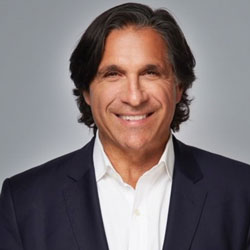That meant they were spending more time at the centers when they visited, were shopping more frequently than historical numbers, and as a result sales improved.
“We are in the business of generating high sales volumes for our retail partners, so it made us re-evaluate our strategy,” Yalof says. “That means national retailers you find in cities and key suburbs, they are drawing the customers beyond what we may draw for the shopping experience, and we get them to stay there and shop. It’s great synergy.”
For instance, at some centers, Tanger has added a sports bar, or a Dave & Buster’s, places for families to gather and spend time before or after shopping.
“We continue to evolve uses and retailers to include those not traditionally found in an outlet center to expand and grow the experience,” Yalof says.
Secrets to Success
What’s unique about the outlet business, Yalof shares, is that there are truly two types of customers—the retailers and the shoppers.
“We have the unique obligation to drive the shopper into our shopping center through our marketing initiatives; we can get in front of shoppers in an original way,” Yalof says. “One of which is our digital loyalty program. We have 38 outlet centers and can brand Tanger and drive customers through an incentive program that rewards them with additional value as they accumulate points, so we have gamified the shopping experience.”
Investors are drawn to Tanger, Yalof feels, because it is relatively inflation-proof, citing that when there are strong macroeconomic headwinds, people are far more conservative where they spend their money, and providing the brands consumers love with value pricing is a part of the solution.
Todd Thomas, managing director for equity research for KeyBanc Capital Markets Inc., has covered Tanger for more than a decade. He believes that a move to lifestyle centers is a savvy transition for the REIT and makes perfect sense, given that it’s no longer limited to purely outlet centers.
“Management had messaged that there might be a strategy shift that would include some non-outlet centers, so they made the pivot, and it now allows them to expand their buy-box and allows the company to leverage its existing platform and build on its existing tenant relationships and add new ones not currently in outlets today,” he says. “From an investment standpoint, it increases the company’s addressable market.”
Thomas points out that the Tanger organization has been through a lot of change over the last few years, including new leadership, and this “fresh set of eyes” has been appealing to investors.
“In a few short years, management has made a number of changes that appear to be positive,” Thomas says. “They decentralized leasing and asset management; they’ve discussed and followed through on adding more food and amenities to the centers; and they overhauled marketing and digital initiatives. All of that has helped build momentum.”
The Road Ahead
In addition to its added focus, Tanger views 2024 as a year full of potential growth.
“Right now, it’s more economical to buy existing assets, far more than it is to build,” Yalof says. “We have our acquisitions team on a number of properties out there where we are in discussions. Our phone is starting to ring with opportunities we have never seen before and we are anxious to pursue them.”
Yalof believes the sector is “very healthy” and with interest rates expected to ease over the next year, that’s an additional encouraging sign that bodes extremely well for Tanger and the retail sector, he adds.



